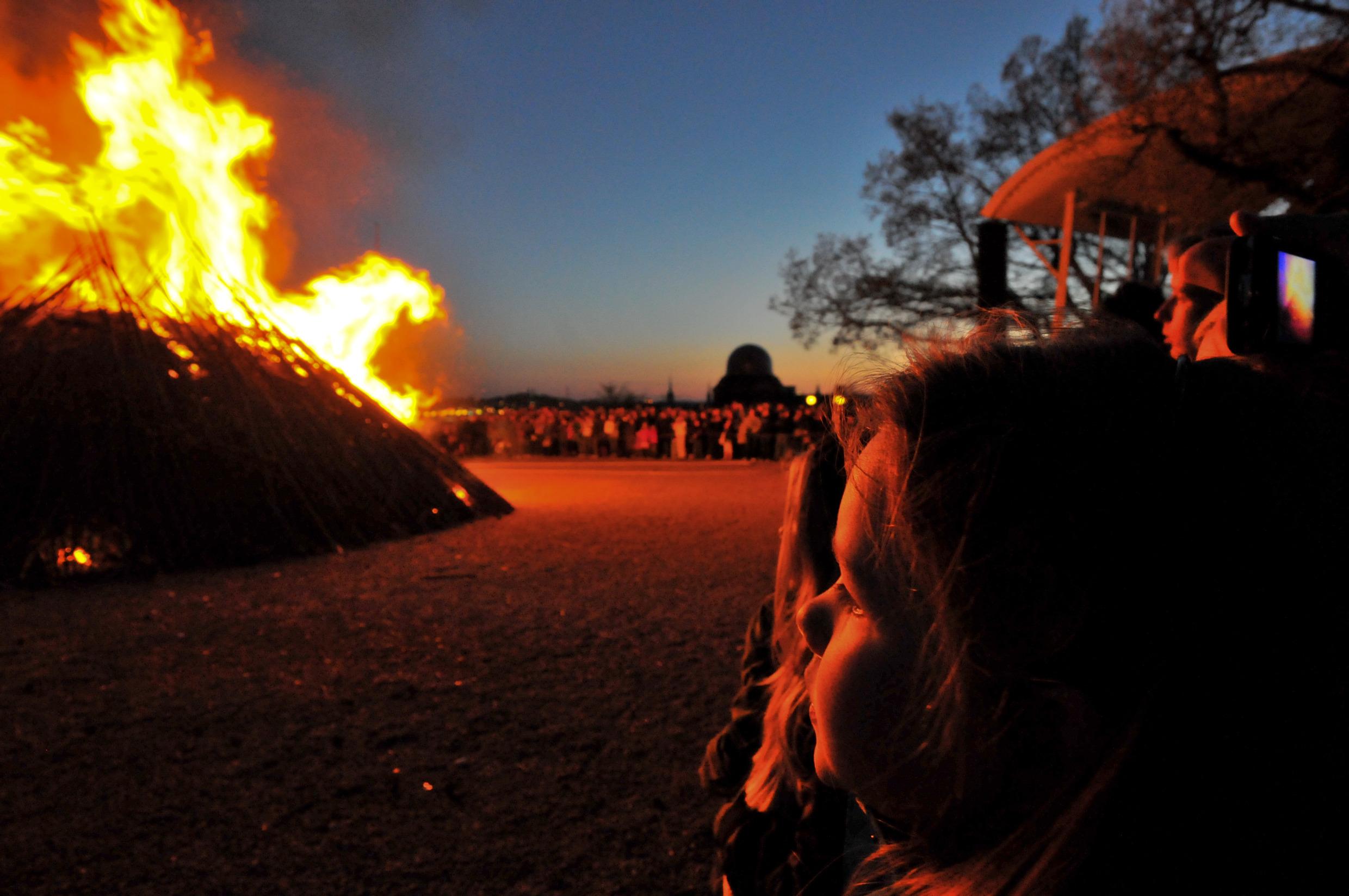Walpurgis Night
Walpurgis Night falls on 30 April. That’s when Sweden greets spring with songs and bonfires.
Walpurgis Night – Valborg in Swedish – is a kick-off for spring. On the last day of April, people will sing songs of spring and light bonfires across the country. The Walpurgis celebrations are not a family occasion but rather a public event, and local groups often take responsibility for organising them to encourage community spirit in the village or neighbourhood.
Chorals and nettle soup
Choral singing is a popular pastime in Sweden, and on Walpurgis Night virtually every choir in the country is busy. Many villages and neighbourhoods light bonfires at dusk, and people gather to experience that rosy red glow in the face from the heat of the fire and the freezing cold at the back. The spring sun may keep people warm, but when it sets the nights are still chilly. Once the fire dies, many people move on to pubs and restaurants or to friends’ parties.
A seasonal dish to warm you up at this time of year is nettle soup. Nettles are a weed, but a very tasty and healthy weed. They quickly appear when the snow melts, contain large amounts of iron and are best when young and fresh.
Bring the student cap
A common sight on Walpurgis Night in Sweden are students wearing their characteristic student cap, normally white with a black peak. They sing songs to welcome spring, to the budding greenery and to a brighter future. For upper secondary school students in their final year, Walpurgis is also an occasion to celebrate that they are about to graduate.
Swedish Walpurgis Night – the origins
Walpurgis was a saint who lived in Germany in the 8th century, and it was Germans who initially brought the Walpurgis Night tradition to Sweden in the Middle Ages.
Back then, the administrative year ended on 30 April. So it was very apt that this was a day of festivity among the merchants and craftsmen of the town, with trick or treat, dancing and singing in preparation for the forthcoming celebration of spring.
Among farmers and peasants, it was an important day in the calendar as the annual village meeting was held, when a new alderman was chosen and eggs and schnapps were served as refreshments. It was also at Walpurgis that farm animals were let out to graze.
Ever since the early 1700s bonfires (majbrasor, kasar) have been lit to scare away predators. People also fired guns, shook cowbells or yelled and screamed to keep the predators at bay.
In some parts of the country, young people went round singing May songs in return for gifts of food on Walpurgis Night. Those who gave them nothing were treated to a ‘nasty’ ditty. Elsewhere, people visited spas to drink the health-giving water and to amuse themselves.
1 May – a public holiday
Walpurgis Night is followed by 1 May − a public holiday in Sweden since 1939. On this traditional workers’ day, the streets are usually filled with May Day demonstrations, meetings and speeches.
